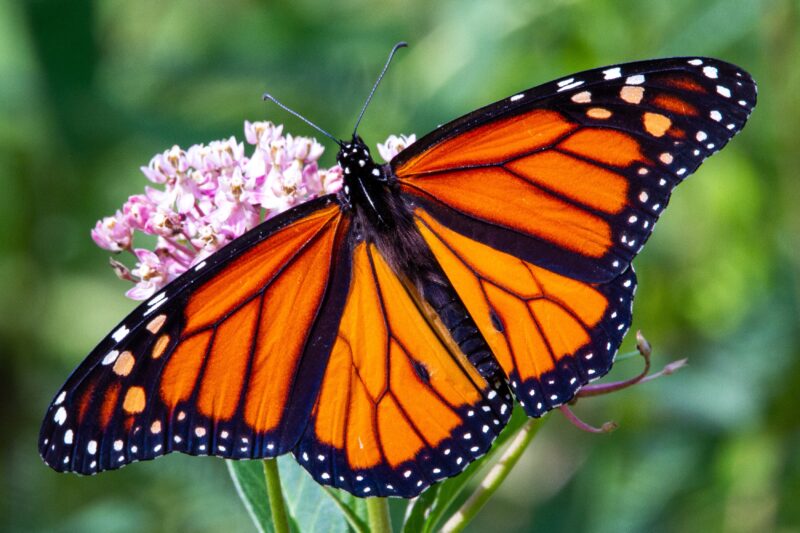International Monarch Monitoring Blitz Citizen Project!
The distinctive monarch butterfly, known for its orange wings interlaced with black lines and white dots border, is famous for their seasonal migration from the United States and Canada to warmer climates in California and Mexico. Their migration across the continent provides an invaluable pollination service which is essential for many ecosystems to thrive. Recently making the International Union for Conservation of Nature’s (IUCN) Red List of Threatened SpeciesTM as Endangered, monarchs are threatened with widespread habitat loss.
You can help protect and conserve the monarch butterfly by joining this year’s International Monarch Monitoring Blitz now through 6 August 2023! Data collected by volunteers each year supports trinational efforts to better understand the monarch butterfly’s breeding productivity, range and timing in North America.

To take part in the Blitz, share your observations through one of the community science programs below:
Canada:
Mexico:
United States:
Monarch Larva Monitoring Project
Western Monarch Milkweed Mapper
In addition to the Blitz, Shubber Ali, CEO of Garden for Wildlife provided his tips on how we can help save the monarchs.
- Plant a diverse range of keystone native plants suited to your eco-region. Milkweed is important, but by planting nectar across three seasons you support hundreds of species, longer.
- Encourage local leaders to join the Mayors’ Monarch Pledge.
- Engage in community conservation actions such as native habitat restoration, education and outreach and local policy changes to benefit monarch butterflies.
- Enroll in monarch conservation, community-based science opportunities in local communities.
- Reduce or eliminate the use of pesticides.
- Create and Certify Your Wildlife Habitat: Create an outdoor space using native plants that attract monarchs and other pollinators. Once you’ve incorporated all the elements of a wildlife-friendly habitat—food, water, cover, and places to raise young—be recognized by certifying your space through Garden for Wildlife’s signature Certified Wildlife Habitat program.
- Check the Native Plant finder to see what varieties grow for your zone. There are several dozen species of milkweed plants native to North America, and it is important to be sure to know your zone to choose the right one for your region.
Photo by Joshua J. Cotten on Unsplash